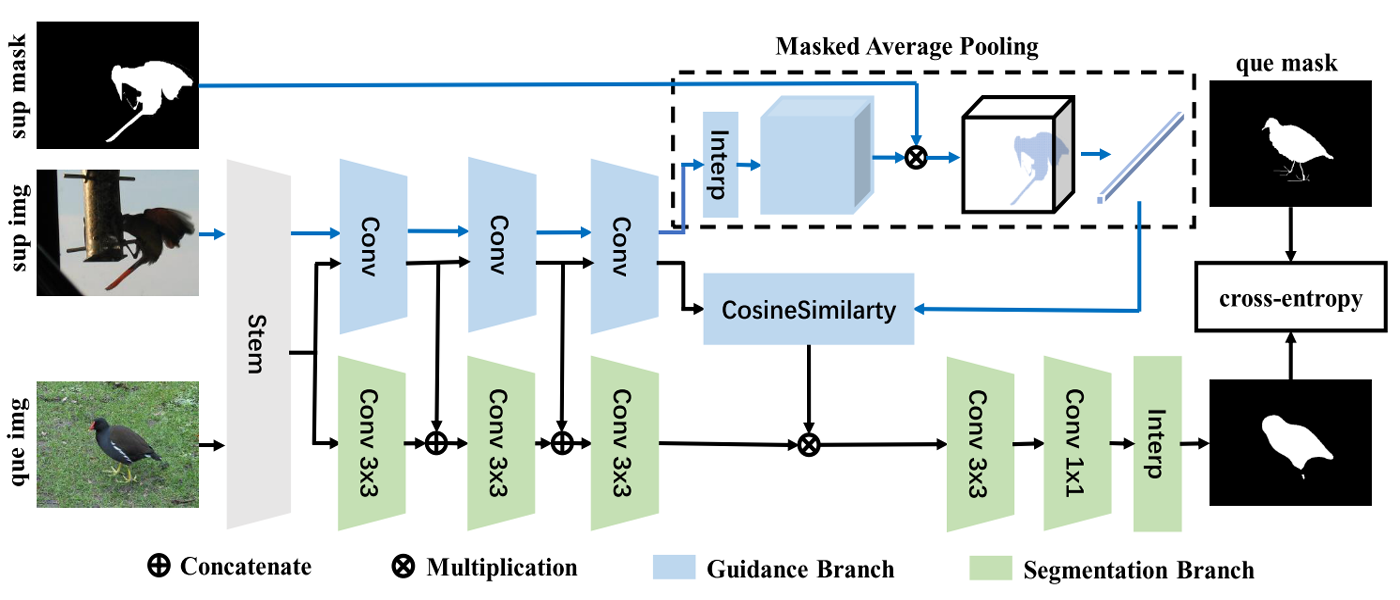SG-One(SG-One: Similarity Guidance Network for One-Shot Semantic Segmentation)[1] adopt a masked average pooling strategy for producing the
guidance features, then leverage the cosine similarity to build therelationship. There are some details of reading and implementing it.
Contents
Paper & Code & note
Paper: SG-One: Similarity Guidance Network for One-Shot Semantic Segmentation(arXiv 2018 / TCYB 2020 paper)
Code: PyTorch
Note: Mendeley
Paper
Abstract
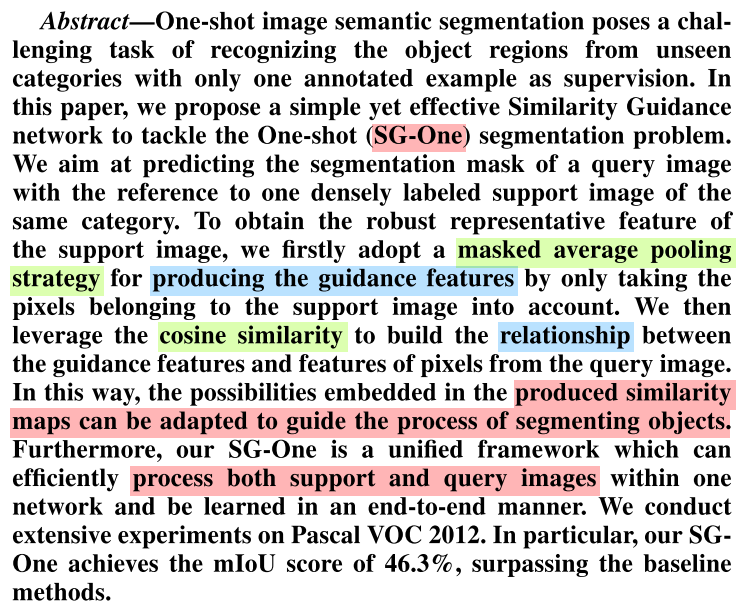
Problem Description
Current existing methods are all based on the Siamese framework, that is, a pair of
parallel networks is trainedfor extracting the features of labeled support images and query images.
- The parameters of using the two parallel networks are redundant, which is prone to
overfittingand leading to the waste ofcomputational resources. Combining the featuresof support and query images by mere multiplication is inadequate for guiding the query network to learn high-quality segmentation masks.
Problem Solution
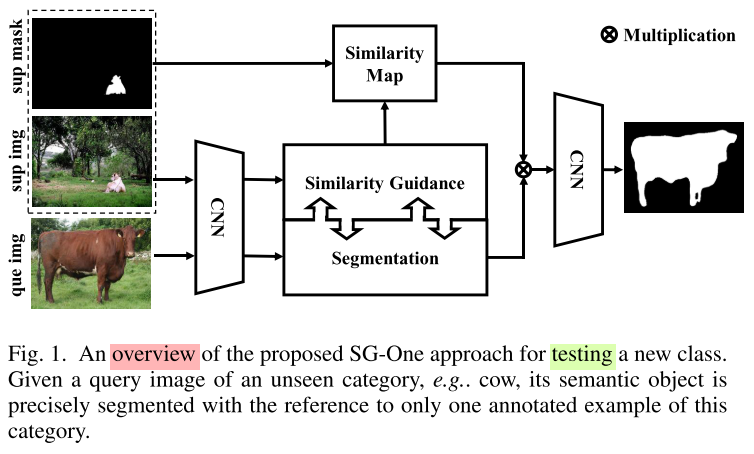

Conceptual Understanding
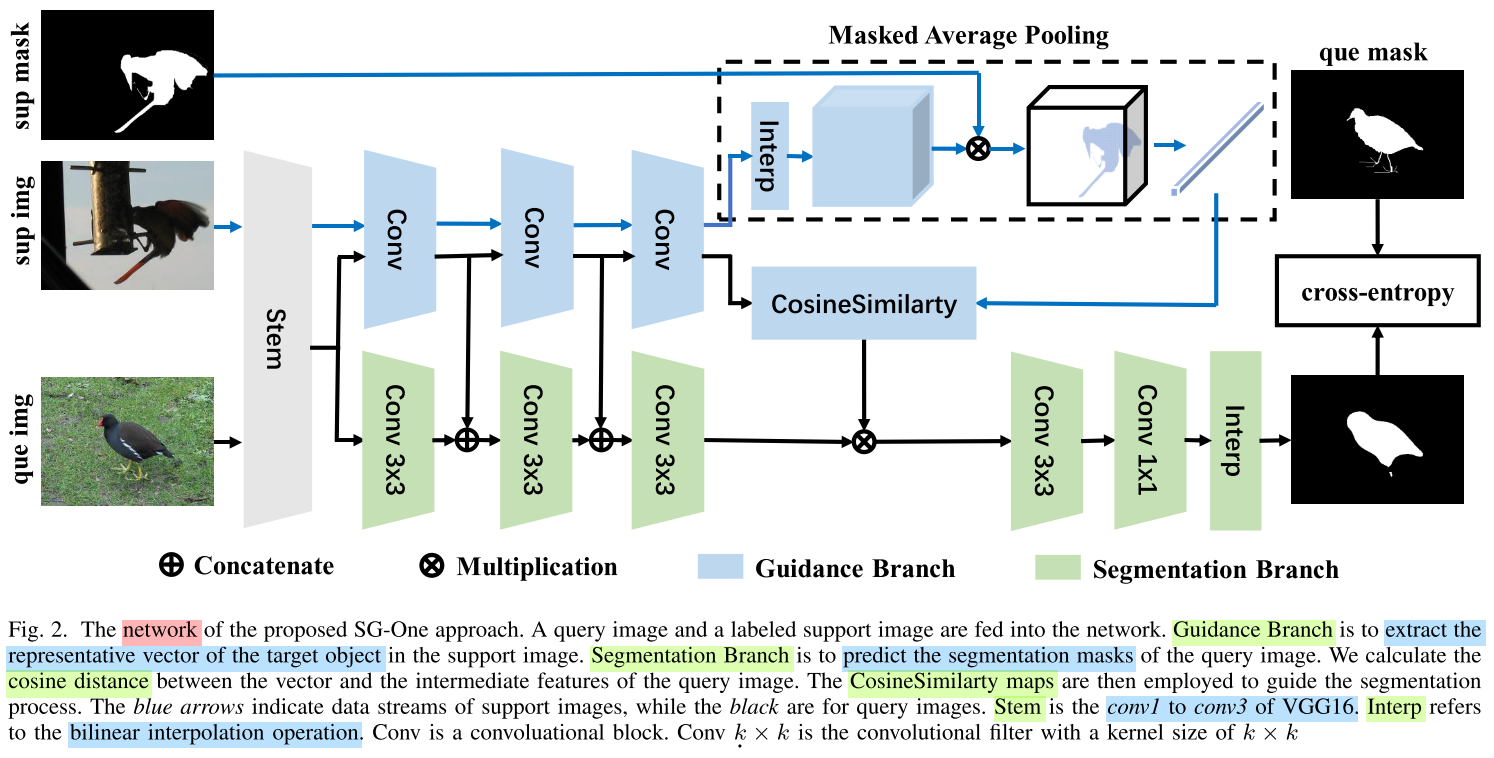
- Similarity Guidance branch: The extracted representative vectors of support images are expected to contain the
high-level semantic features of a specific object. - Segmentation branch: Through the concatenation, Segmentation Branch can borrow features from the paralleling branch, and these two branches can
communicate information during the forward and backward stages.
Core Conception

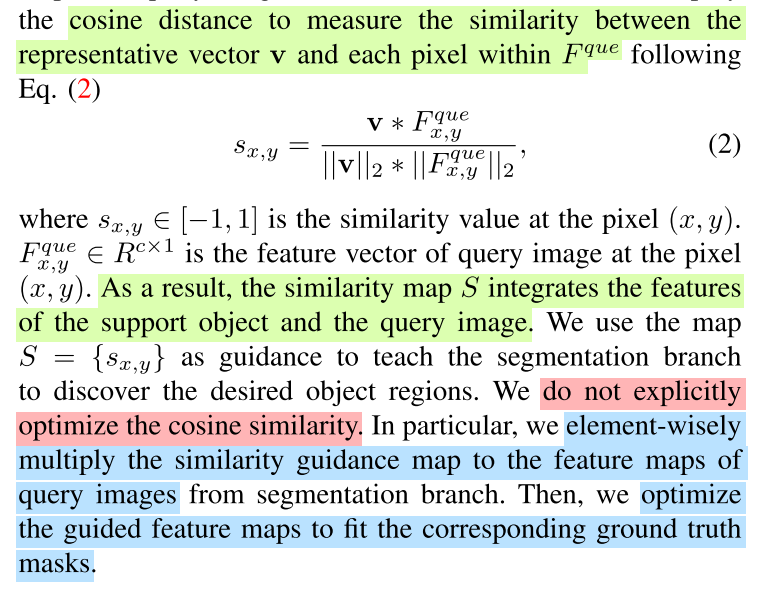
Experiments
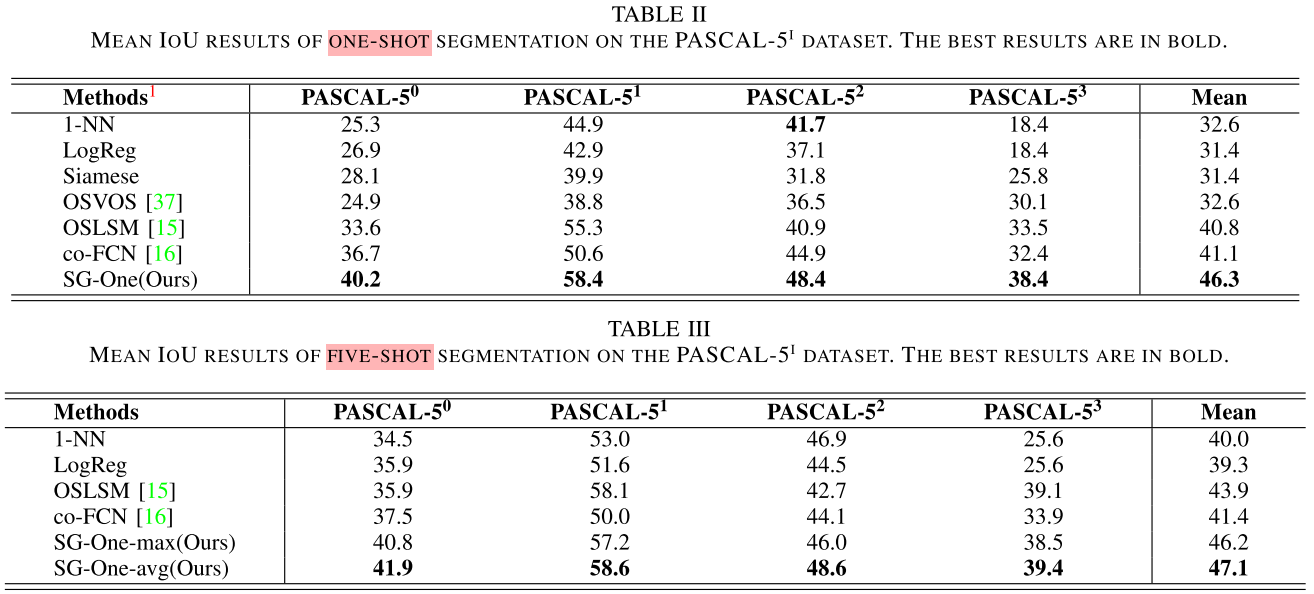
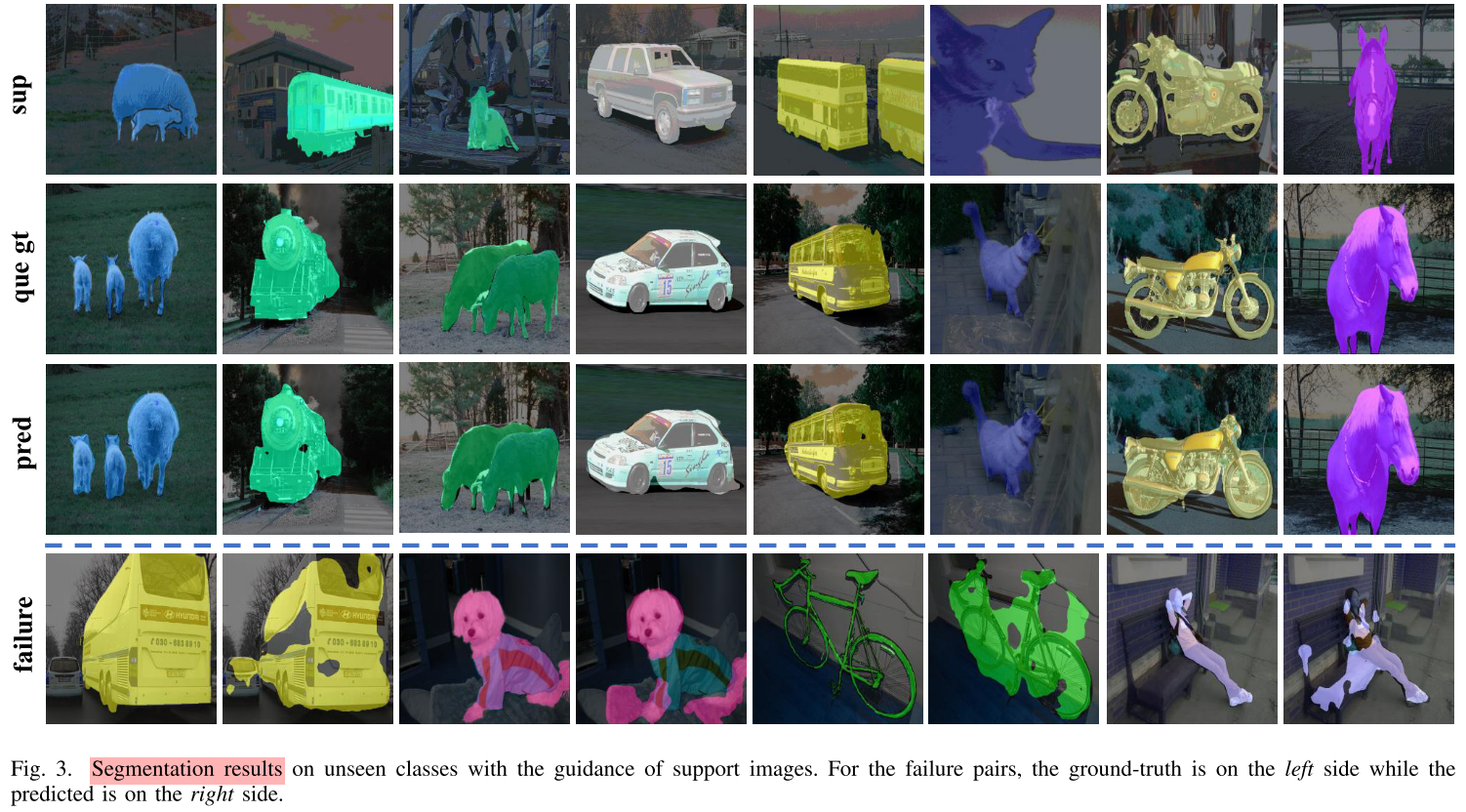
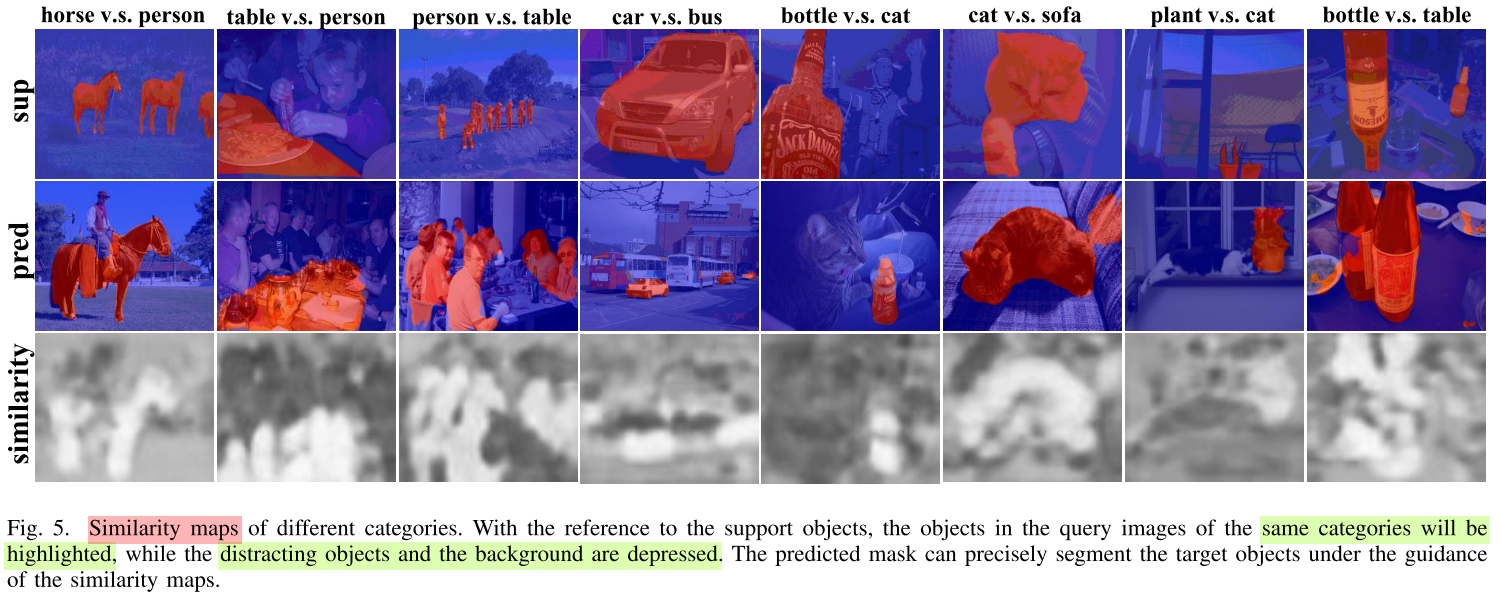
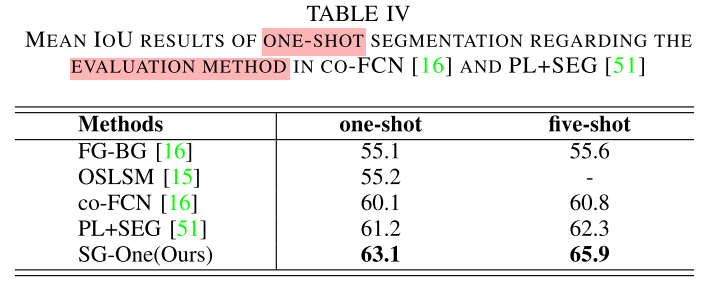
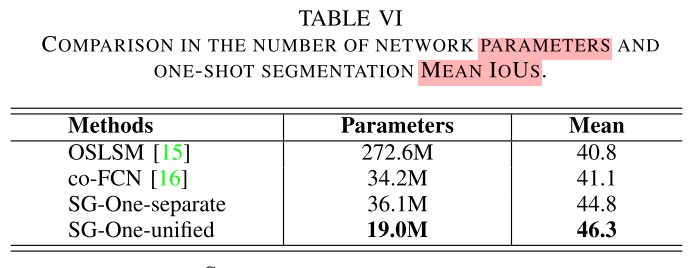

Code
[Updating]
Note
- The latent distributions between the training classes and testing classes do not align, which
prevents us from obtaining better features for input images. - The predicted masks some-times can only cover part of the target regions and may include some background noises if the target object is too similar to the background.
References
[1] Zhang X, Wei Y, Yang Y, et al. Sg-one: Similarity guidance network for one-shot semantic segmentation[J]. IEEE Transactions on Cybernetics, 2020.
[2] SG-One. https://github.com/xiaomengyc/SG-One.
